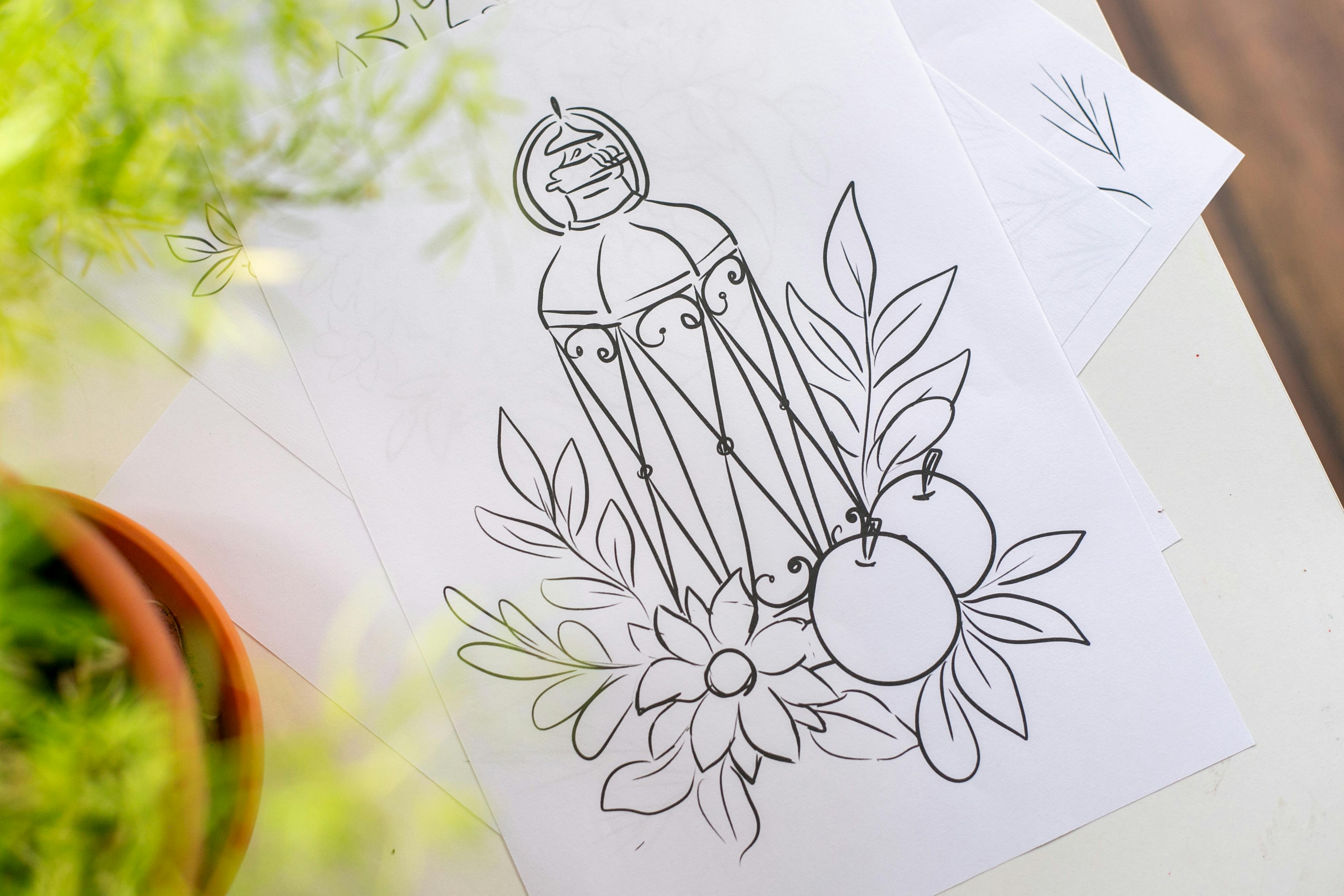Overview of AutoCAD Shortcuts
Efficient design is crucial in the world of AutoCAD, and one way to achieve it is by using AutoCAD shortcuts. These keyboard shortcuts are a set of commands that allow you to perform actions quickly and effortlessly. Whether you are a beginner or an experienced user, familiarizing yourself with these shortcuts can significantly boost your productivity.
What are AutoCAD shortcuts?
AutoCAD shortcuts are key combinations that provide quick access to various tools and commands within the software. Instead of navigating through menus and toolbars, you can simply press a few keys to perform common functions like zooming, panning, or drawing lines. These shortcuts are designed to save you time and effort while working on your designs.
Why are AutoCAD shortcuts important?
By using AutoCAD shortcuts, you can streamline your workflow and complete tasks with greater efficiency. They eliminate the need to search for specific tools or navigate through multiple menus, allowing you to focus more on your design. Additionally, using shortcuts can reduce the strain on your hands and fingers by minimizing repetitive mouse movements.
Benefits of using AutoCAD shortcuts
There are several advantages to incorporating AutoCAD shortcuts into your design process. Firstly, they save time by speeding up routine tasks, such as selecting objects, editing properties, or changing views. Secondly, shortcuts improve accuracy by reducing the chances of errors that may occur during manual selections or mouse clicks. Lastly, they enhance your overall productivity and help you navigate AutoCAD with ease.
Familiarizing yourself with AutoCAD shortcuts is a worthwhile investment. By leveraging these keyboard shortcuts, you can optimize your design workflow, enhance accuracy, and ultimately become a more efficient AutoCAD user. So, why not start incorporating these time-saving shortcuts into your daily design tasks?

This image is property of images.pexels.com.
## Getting Started with AutoCAD Shortcuts
AutoCAD Shortcuts provide a convenient and efficient way to navigate and design within the AutoCAD software. By using keyboard shortcuts, you can streamline your workflow, saving time and effort in your design process. This article will guide you on how to enable and customize AutoCAD shortcuts, as well as provide tips on learning and memorizing commonly used shortcuts.
Enabling and Customizing AutoCAD Shortcuts
To enable AutoCAD shortcuts, you can go to the Customize User Interface (CUI) editor, which allows you to modify the existing shortcuts or create your own. By customizing the shortcuts to match your preferred workflow, you can enhance your productivity and design efficiency.
Learning and Memorizing Commonly Used Shortcuts
Learning and memorizing commonly used shortcuts is essential in maximizing the benefits of AutoCAD shortcuts. You can start by familiarizing yourself with the frequently used commands and their associated keyboard shortcuts. Practice using these shortcuts consistently to build muscle memory and increase your speed in executing commands.

This image is property of images.pexels.com.
## Essential AutoCAD Keyboard Shortcuts
If you want to speed up your design process and become more efficient in AutoCAD, utilizing keyboard shortcuts is the way to go. AutoCAD shortcuts allow you to quickly access frequently used commands, navigate through the software seamlessly, and make edits effortlessly without having to rely heavily on the mouse. In this article, we will discuss the essential AutoCAD keyboard shortcuts that will help improve your productivity and streamline your design workflow.
Navigation Shortcuts
Navigation shortcuts enable you to move around your drawing effortlessly, saving you valuable time. With these shortcuts, you can easily pan, zoom, and navigate through different views. For instance, pressing “P” allows you to pan your drawing in any direction, while using “Z” allows you to zoom in and out smoothly.
Editing Shortcuts
Editing shortcuts are crucial when it comes to modifying your design quickly and accurately. These shortcuts make it easier to perform common editing tasks, such as copying, mirroring, trimming, and extending objects. By memorizing and utilizing these shortcuts, you can simplify complex editing procedures and speed up your design process.
Command Shortcuts
Command shortcuts are perhaps the most important and versatile shortcuts in AutoCAD. They give you direct access to various commands, eliminating the need to navigate through numerous menus. With command shortcuts, you can quickly activate and execute commands like “Line,” “Circle,” or “Dimension,” saving you significant time and effort.
By familiarizing yourself with these essential AutoCAD keyboard shortcuts, you can become a more efficient designer and complete your projects in a timely manner. Incorporating these shortcuts into your workflow will enhance your productivity and streamline your design process, ultimately helping you to excel in AutoCAD.

This image is property of images.pexels.com.
## Advanced AutoCAD Shortcuts for Efficient Design
If you’re looking to take your AutoCAD design skills to the next level, mastering keyboard shortcuts is a must. These handy shortcuts can help you save time and streamline your workflow, allowing you to design more efficiently. In this section, we will explore some advanced AutoCAD shortcuts that will enable you to navigate through complex designs with ease.
Layer management shortcuts
Managing layers is an essential part of any AutoCAD project, and these shortcuts will help you do it faster. By using shortcuts like Ctrl + 2 to open the Layers Properties Manager or Ctrl + Shift + C to create a new layer, you can quickly and effortlessly manage your layers.
Drawing and drafting shortcuts
Drawing and drafting are the backbone of any design project, and AutoCAD offers several shortcuts to make these tasks more efficient. For instance, you can use L to start the Line command or C to initiate the Circle command. These shortcuts eliminate the need to navigate through multiple menus, saving you precious time.
Dimensioning shortcuts
Accurate dimensioning is crucial in AutoCAD, and these shortcuts will help you dimension your designs with ease. When annotating your drawing with dimensions, you can use shortcuts like Dimlinear or Dimangular to quickly add linear or angular dimensions respectively. These shortcuts ensure that you can annotate your drawings accurately and efficiently.
By mastering advanced AutoCAD shortcuts for layer management, drawing and drafting, and dimensioning, you can streamline your design process and work more efficiently. With these time-saving tricks up your sleeve, you’ll be able to tackle complex designs with ease and maximize your productivity in AutoCAD.
Customizing and Creating Your Own AutoCAD Shortcuts
Customizing and creating your own AutoCAD shortcuts can greatly enhance your design efficiency, saving you valuable time and effort. With the Customize User Interface (CUI) tool, you have the power to modify existing shortcuts or even create new ones to fit your specific needs.
Understanding the Customize User Interface (CUI) tool
The CUI tool is a powerful feature in AutoCAD that allows you to customize the software’s user interface, including the keyboard shortcuts. You can access the CUI tool by typing “CUI” in the command line or by navigating through the menus. Once inside, you will find a list of existing commands along with their associated shortcuts.
Modifying existing shortcuts
Modifying existing shortcuts is a great way to tailor AutoCAD to your preferred workflow. Within the CUI tool, you can easily change the assigned shortcut keys for any command. Simply select the command you wish to modify, click on the “Properties” button, and enter the desired shortcut key combination.
Creating new shortcuts
In addition to modifying existing shortcuts, you also have the option to create entirely new shortcuts. This allows you to assign specific keyboard combinations to commonly used commands that do not already have shortcuts. The process is similar to modifying shortcuts, but instead of selecting an existing command, you will create a new command and assign it a shortcut of your choice.
By customizing and creating your own AutoCAD shortcuts, you can streamline your design process and work more efficiently. Take advantage of the CUI tool to tailor the software to your individual needs and design like a pro.
Time-Saving Tips and Tricks with AutoCAD Shortcuts
AutoCAD shortcuts can greatly enhance your design efficiency and productivity. By utilizing these keyboard shortcuts, you can easily access commonly used commands, navigate through menus, and perform actions without wasting time searching for specific functionalities.
Using marking menus for quick access to commands
AutoCAD offers marking menus, which provide a contextual menu that allows you to access commands quickly. By right-clicking and dragging the cursor in a specific direction, you can bring up a menu with various command options related to the selected object or location. This intuitive feature saves you time by eliminating the need to navigate through multiple menus to find the desired command.
Utilizing keyboard shortcuts in conjunction with dynamic input
Dynamic input, a feature in AutoCAD, displays command prompts near the cursor, allowing you to input commands and parameters directly through the keyboard. By combining dynamic input with keyboard shortcuts, you can perform commands more efficiently, as it eliminates the need to switch between the mouse and keyboard.
Increasing productivity with custom function keys
AutoCAD allows you to customize function keys to assign specific commands or macros. This feature enables you to create shortcuts for frequently used commands, making them instantly accessible with a single key press. By customizing function keys, you can streamline your design workflow and improve productivity since you no longer have to search for the commands within menus.
With these time-saving tips and tricks, you can achieve greater efficiency in your AutoCAD design process, allowing you to focus on creating high-quality designs without being hindered by unnecessary navigation and command search.
Troubleshooting and Common Challenges with AutoCAD Shortcuts
As you become proficient in using AutoCAD shortcuts for designing, it’s essential to be aware of some common challenges that can arise. This section will guide you through troubleshooting common issues and provide solutions to ensure smooth and efficient use of AutoCAD keyboard shortcuts.
Shortcut conflicts and overrides
Occasionally, you may encounter conflicts between shortcut commands or find that certain shortcuts don’t work as intended. This can happen due to conflicting command names or overriding custom key assignments. It’s important to identify and resolve these conflicts to avoid frustration and optimize your workflow.
Recovering or resetting default shortcuts
There might be times when you accidentally modify or delete a crucial shortcut, leaving you with a disrupted workflow. In such cases, knowing how to recover or reset default shortcuts can be a lifesaver. We’ll show you step-by-step instructions to get your shortcuts back on track.
Managing shortcuts when switching between different versions of AutoCAD
If you work with different versions of AutoCAD regularly, you may find yourself adjusting to different sets of shortcuts. We’ll share tips on managing shortcuts efficiently during these transitions, helping you maintain productivity across different versions of the software.
With the solutions outlined in this section, you’ll be equipped to tackle any challenges you may encounter while using AutoCAD shortcuts. By troubleshooting conflicts, recovering shortcuts, and managing different versions, you’ll ensure seamless and efficient design work in AutoCAD.
Mastering AutoCAD Shortcuts: Practice Exercises and Resources
With AutoCAD Keyboard Shortcuts, you can increase your productivity and efficiency while designing. However, mastering these shortcuts can be a daunting task for beginners. Don’t worry! We have got you covered with practice exercises and valuable resources to help you become an AutoCAD Shortcut pro in no time!
Interactive exercises to improve shortcut proficiency
To enhance your shortcut proficiency, we provide interactive exercises that simulate real-world design scenarios. These exercises challenge you to utilize AutoCAD shortcuts effectively and efficiently. By completing these exercises, you will familiarize yourself with commonly used shortcuts and gain confidence in implementing them.
Online tutorials and video resources
You don’t have to go through the learning process alone! We offer online tutorials and video resources that cover a wide range of topics related to AutoCAD shortcuts. Our friendly instructors will guide you through various shortcut techniques, explaining their uses and advantages. These resources are designed to suit different learning styles and provide detailed explanations and examples to help you grasp the concepts easily.
AutoCAD shortcut cheat sheets and reference guides
We understand that having a quick reference is crucial when you are in the middle of a design project. That’s why we have created handy cheat sheets and reference guides, which you can download and keep within reach. These resources list the most frequently used AutoCAD shortcuts, making it easy for you to find the command you need without interrupting your workflow.
Mastering AutoCAD shortcuts has never been easier. With our practice exercises, online tutorials, and cheat sheets, you can boost your efficiency and design skills using AutoCAD Keyboard Shortcuts. So, start your journey today and unlock your true design potential!
Tips for Effective Implementation of AutoCAD Shortcuts
Consistency and repetition for memorization
To efficiently design with AutoCAD keyboard shortcuts, consistency and repetition are key. Start by selecting a set of shortcuts that you find most useful or frequently use in your design process. Dedicate time to practicing and integrating these shortcuts into your daily workflow. By consistently using these shortcuts, they will become second nature to you, allowing you to work faster and more efficiently.
Incremental adoption of shortcuts into your workflow
Instead of overwhelming yourself with learning all the shortcuts at once, it is more effective to adopt them incrementally. Start by focusing on a few essential shortcuts and gradually incorporate more as you become comfortable. This gradual approach will prevent information overload and enable you to retain the shortcuts better.
Periodic reviewing and refreshing of shortcut knowledge
As you continue to use AutoCAD shortcuts, it is important to periodically review and refresh your knowledge. Take time to reflect on the shortcuts you have learned and assess whether there are any new ones that could further enhance your design process. This periodic reviewing will reinforce your existing knowledge while also keeping you informed about any updates or new shortcuts available.
By implementing these tips, you will be well on your way to maximizing your efficiency and productivity with AutoCAD shortcuts. Streamline your design process and save valuable time by utilizing these powerful tools at your fingertips.
Conclusion
AutoCAD shortcuts are a powerful tool that can greatly enhance your design process, allowing for more efficient and faster work. By memorizing and utilizing these shortcuts, you can save valuable time and increase your productivity.
The power of AutoCAD shortcuts for efficient and faster design
AutoCAD shortcuts are designed to streamline your workflow, eliminating the need to navigate through menus and toolbars. With just a few keystrokes, you can perform common tasks like drawing lines, creating layers, and applying dimensions. This not only speeds up your design process but also reduces the risk of errors and improves accuracy.
Continued practice and exploration for mastery of shortcuts
While mastering AutoCAD shortcuts takes practice, the benefits are well worth the effort. As you become more familiar with the shortcuts, you’ll find yourself completing tasks more quickly and with greater precision. Don’t be afraid to experiment and explore new shortcuts – you may discover even more efficient ways to work.
Enhancing productivity and workflow through shortcut utilization
By incorporating AutoCAD shortcuts into your design workflow, you can significantly enhance your productivity. The time saved from navigating menus and toolbars can be better spent on other aspects of your project. Additionally, the increased efficiency allows you to take on more projects and meet tighter deadlines without compromising quality.
In conclusion, AutoCAD shortcuts are an invaluable resource for any designer looking to optimize their workflow. By mastering these shortcuts, you can save time, increase productivity, and produce high-quality designs more efficiently. So start memorizing those keystrokes and take your design skills to the next level!
